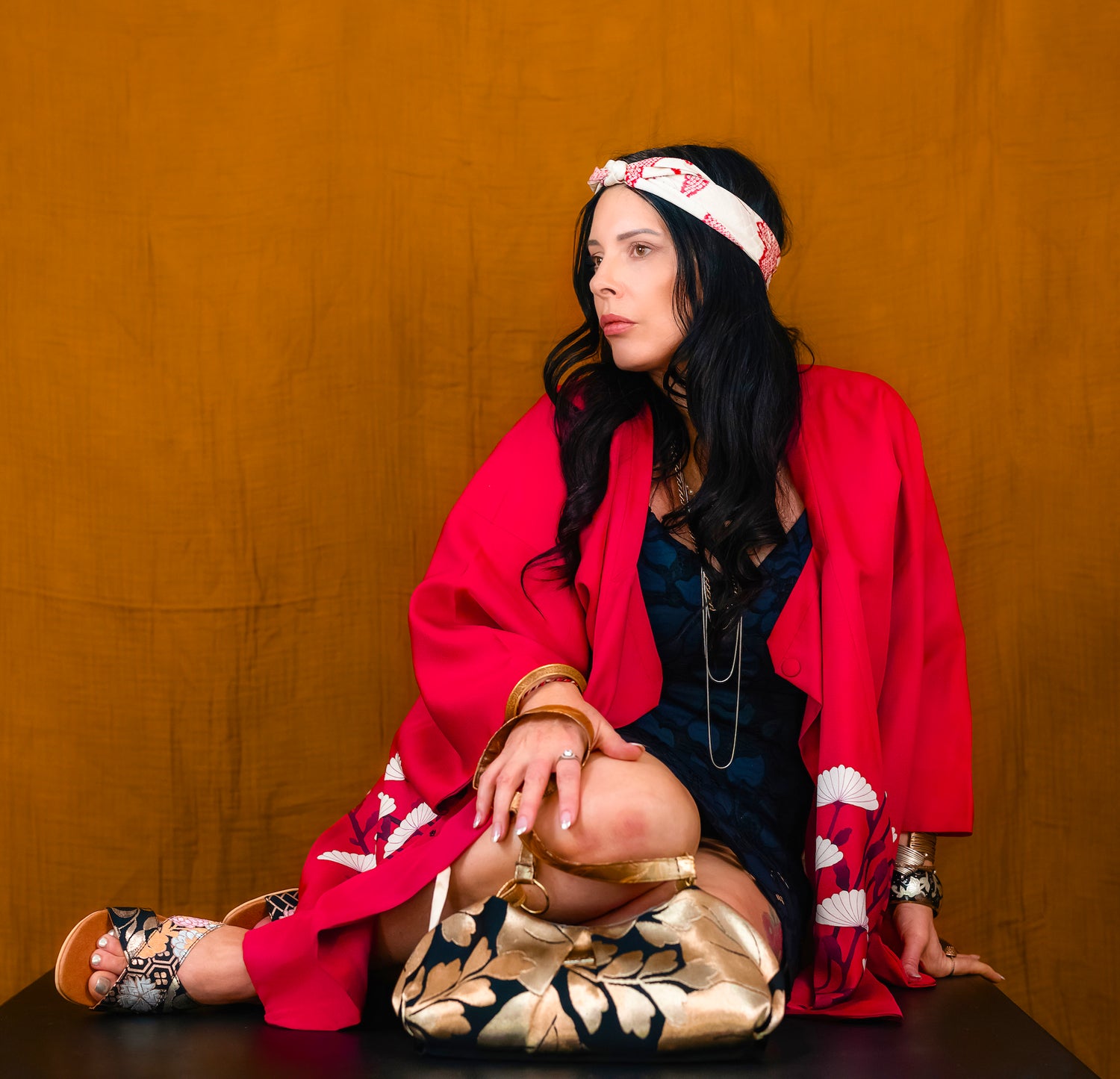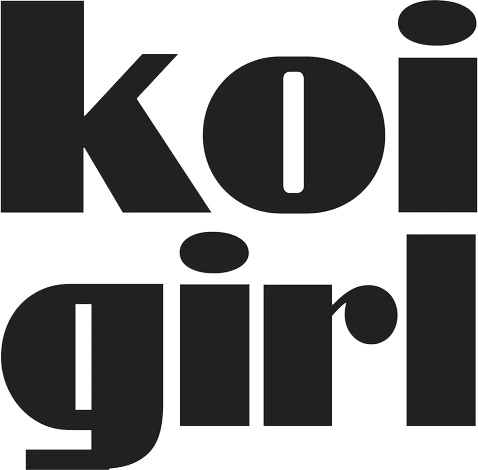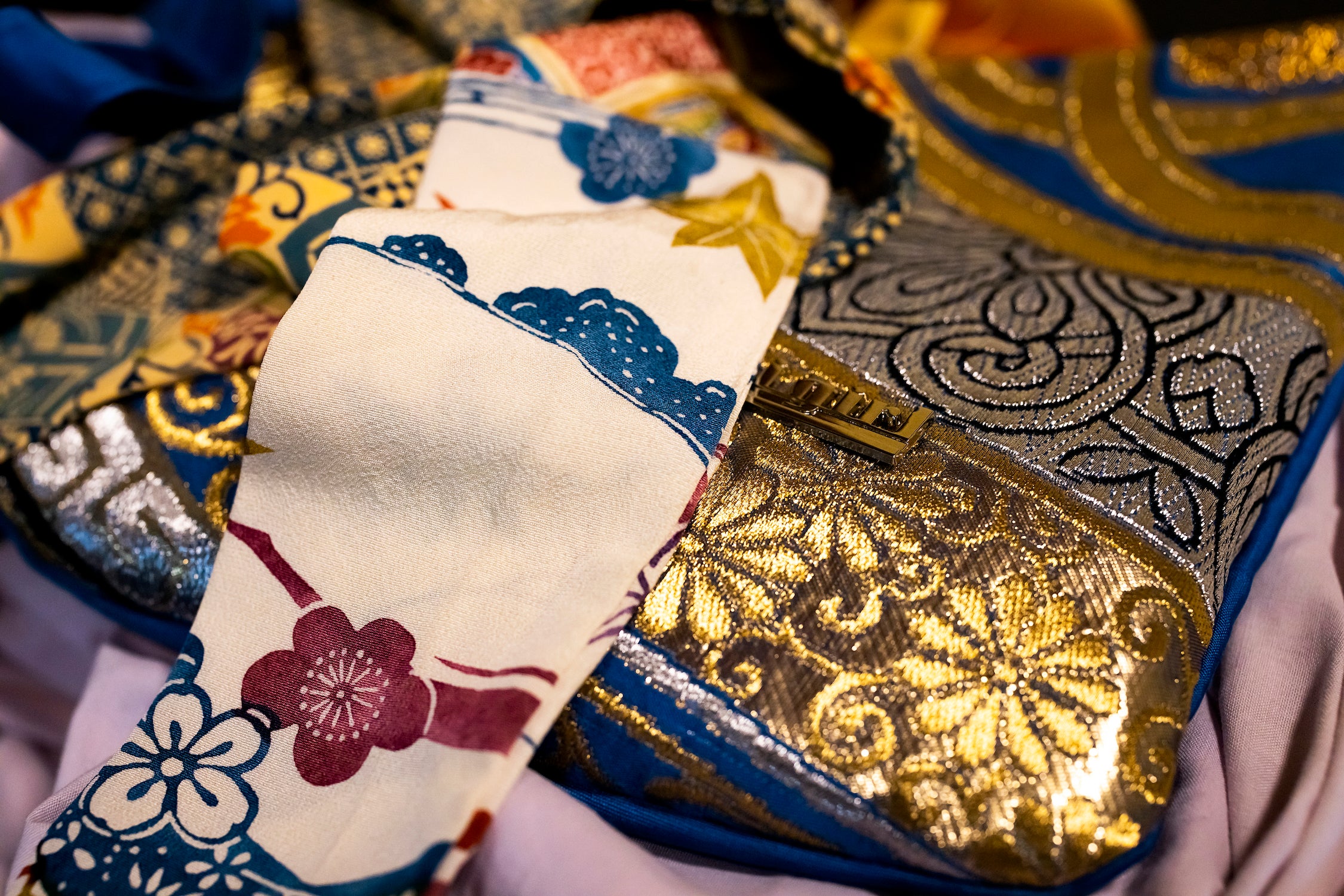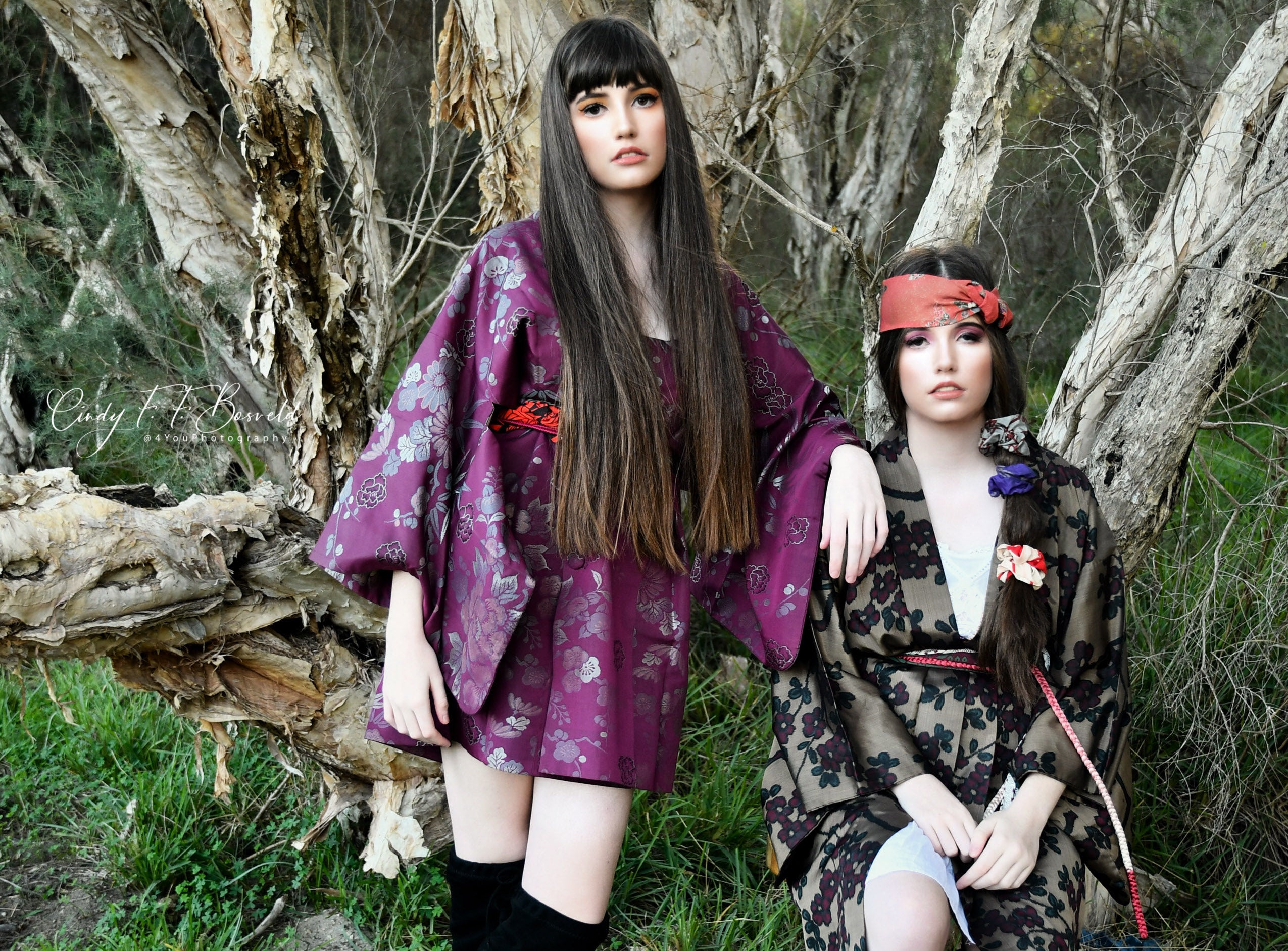About Koi Girl
Perth label Koi Girl transforms beautiful and precious authentic vintage silk kimono and obi, into stunning, one-of-a-kind handbags, accessories and even shoes.
Focused on sustainability with style and ethical fashion, Koi Girl's upcycled designs retain the beauty of their original form while creating reimagined contemporary collections.
Koi Girl collections include one of a kind statement piece handbags, clutches, purses and versatile scarves, which can be worn as head scarves, neck scarves or like a truly reimagined obi, as a waist sash. Carefully handcrafted with love, these pieces make the most divine and unique gift.
Koi Girl shoes are also another addition to the Koi Girl collection.
These shoes are beautifully and ethically made into beautiful modern day ‘geta’.
These stunning one of a kind handcrafted square heeled mules, from vintage silk obi belts and leather are made by a family owned small manufacturing business in Ubud, Bali. The small factory operations started up again after a long period of uncertainty and struggle from Covid19. I am so grateful to have my shoes made by this family, and to support small businesses, not just locally in Australia, but in communities abroad.
The leather used for the shoe is a supple yet strong leather that is both breathable and flexible. The silk obi belts are carefully deconstructed and then pieced together with the leather to create an understated cross over design. The hand cut and crafted leather is designed to be comfortable for extended wear making it ideal for everyday wear and any special occasion. The simple and classic design compliments a variety of different looks and can be dressed up or down to suit any occasion. Of course you can wear these shoes to accompany a one of a kind Koi Girl clutch or handbag. These mules will no doubt become a favourite pair of shoes in your wardrobe. Supporting this small manufacturing business, as well as the sustainable fashion movement, makes these one of a kind shoes a truly special item in anyone's collection.
If you want the real deal in its original form, Koi Girl also sells authentic vintage silk Kimono and Haori, all sourced directly from Japan. The kimono (きもの/着物, 'thing to wear' – from the verb "to wear (on the shoulders)" (着る, kiru), and the noun "thing" (物, mono) is a traditional Japanese garment and the national dress of Japan.
The traditional art of dressing in Kimono is known as Kitsuke (着付け). Kitsuke is a highly structured artform, which takes patience and discipline to learn properly. When it comes to the obi belt, there are many beautiful and elaborate ways to tie it. An obi (帯) is a belt of varying size and shape worn with a Kimono. Originating as a simple thin belt in Heian period Japan, the obi developed over time into a belt with a number of different varieties, with a number of different sizes and proportions, lengths, and methods of tying. The obi, which once did not differ significantly in appearance between men and women, also developed into a greater variety of styles for women than for men.
When women are choosing their kimono, they are dressing according to their marital status, their age and the event. When dressing in a Kimono, there are five rules that are very important to wear the Kimono respectfully. 1. Cross the left side over the right side. In order to close your kimono (or yukata) correctly. 2. Wear white tabi socks. 3. Tie the obi knot on the backside. Ever since the 1700s, it has been the standard practice to so. 4. Wear an undergarment called a naga juban under your kimono. 5. Reserve the Yukata (a summer Kimono) for informal events.
Of my 6 years living in Japan, and whenever I return, I am always amazed by the kimono, the textile techniques applied to the garment and the Obi belt, hand painted, dyed, embroidered and printed, the way it is worn, so elegant and perfectly graceful. Understanding the history a kimono invokes is just breathtaking, and I have been very grateful to experience a part of my life learning about traditional Japan. My Japanese friends would encourage my sister and I to wear a Kimono to special events and festivals. Japanese people enjoy sharing their culture with the world. With pride.
Globally, the Kimono is an iconic muse in the fashion industry. BBC article, Kimono- from status symbol to high fashion, explains, “Kimono is once again being seen on the streets of Japan, proving that far from being a static icon it is a dynamic, fashionable, garment whose use and significance has ebbed and flowed with the tides of history.” Click here to read the article.
In 2020, The Victoria & Albert Museum (V&A) in London opened "Kimono: Kyoto to Catwalk," this was the first major European exhibition dedicated to the garment. Presenting over 80 kimonos dating as far back as 1660s, the exhibition traces how the kimono became a truly global garment worn, sold, riffed on and reinvented by artisans, designers and fashion-lovers around the world.
International fashion designers have used the kimono to draw on Japan’s traditions of exquisite craftsmanship and design sensibility, incorporating kimono-inspired designs on their garments.
Wear a kimono as an open jacket or wrap dress or robe. Wear with a dress underneath, or with jeans and a t shirt, with or without a belt, heels or flats, its up to you.
Hand-selected, hand-made. Sourced globally. Made locally.
These divine vintage silk obi belts and kimono, are hand-selected from Japan. The design process of each handbag, clutch, or purse is carefully considered due to the patterns, textures and prints of the vintage piece of fabric. All handbags, purses, headscarves are one of a kind, and they are proudly handcrafted in Perth, WA.
Upcycled. Ethical. Handcrafted.
Each piece has a story to tell
Koi Girl is as much about reinvention as it is retelling. Because Japanese culture is rich with symbolism, behind each piece of fabric is a meaningful story. By repurposing these beautiful fabrics, Koi Girl owner and designer Tanya Stewart is not only bringing new life to the garments, but re-telling their story - in a new way. The products come to life - and when a customer chooses a product because something in the pattern or fabric resonates with them, a new story is born.
Bespoke service
While each Koi Girl bag or accessory is unique, if you have an idea of your own, Koi Girl offers a custom design service. Email us if you want to co-create with us. * Please note, there is a waiting list for custom orders.
Quality and authenticity
Because the fabric is sourced from authentic vintage kimono or obi, every Koi Girl product is made of high-quality silk, wool and cottons. But for the same reason - your product is made from vintage material - we recommend how to take care of your product in these following steps:
- Please get professionally cleaned.
- If you would like to get a protective treatment done, please get it done professionally.
- Store out of direct sunlight and bright lights, this can damage the colours on your Koi Girl handbag or accessory.
Koi Girl has featured in:
- Kaviar Magazine – Spring/Summer 2017
- Junkies Magazine (including front cover feature) – Issue 7, 2016
- Weekend Australian Newspaper – September 2013
- Peppermint Magazine – 2013
- Tickle the imagination Magazine (including back cover feature) – 2013
- WA Born (Fashion Event) – 2016
Koi Girl thanks the following people:
Photographer: Bonnie Evans and Lynne Collings Dullard from Evalyn Photography - for numerous Koi Girl shoots and for their patience and talent
https://www.facebook.com/evalynphotography/

Koi Girl is Stocked at :
- The Artisan Store – 81 High Street, Fremantle
- Two Birds - 18 Brooke Road, Darlington
- Mundaring Shoes - Mundaring Village, 7295 Great Eastern Highway, Mundaring Village
- Japanese Flea Market - shop 29 17-31 Rokeby Road, Subiaco



